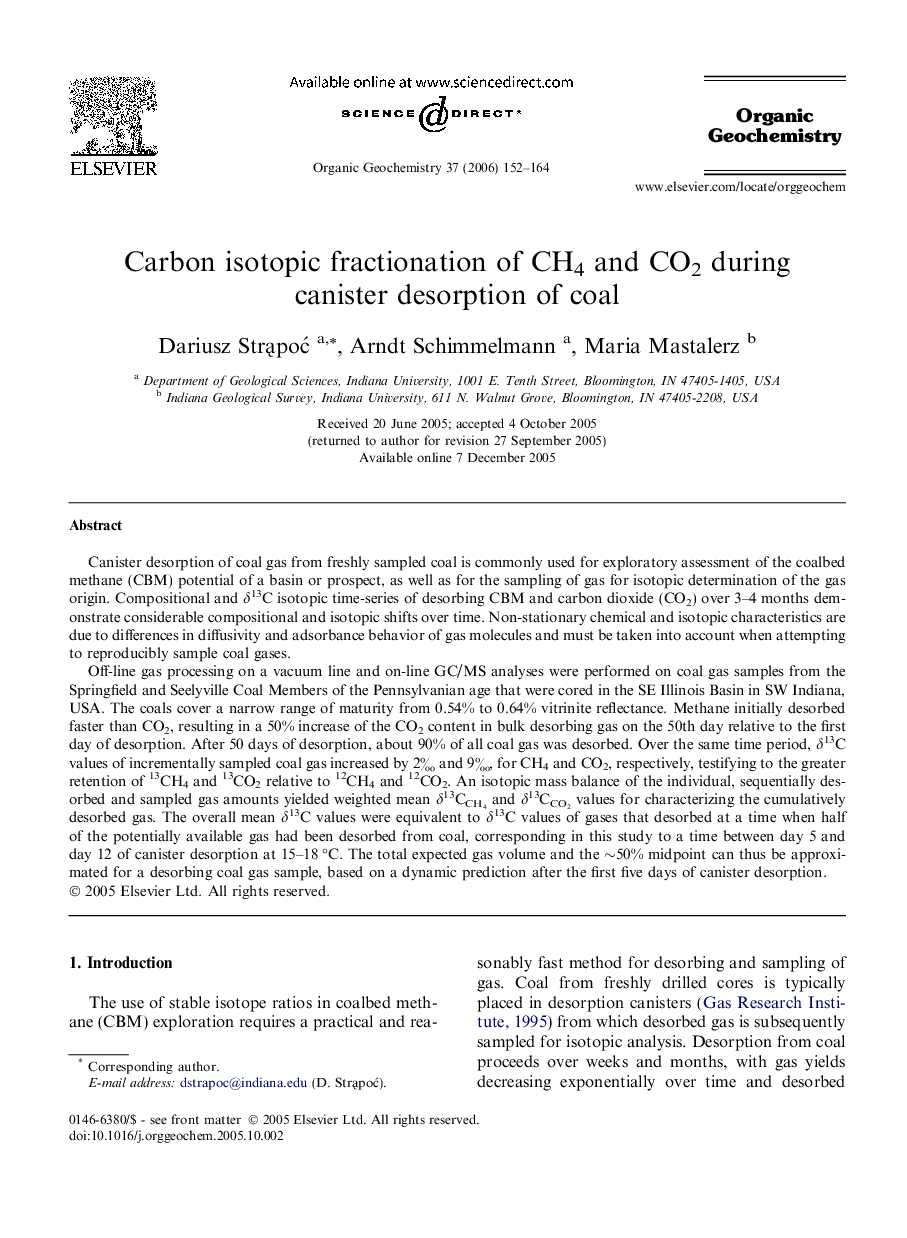| Article ID | Journal | Published Year | Pages | File Type |
|---|---|---|---|---|
| 5163367 | Organic Geochemistry | 2006 | 13 Pages |
Abstract
Off-line gas processing on a vacuum line and on-line GC/MS analyses were performed on coal gas samples from the Springfield and Seelyville Coal Members of the Pennsylvanian age that were cored in the SE Illinois Basin in SW Indiana, USA. The coals cover a narrow range of maturity from 0.54% to 0.64% vitrinite reflectance. Methane initially desorbed faster than CO2, resulting in a 50% increase of the CO2 content in bulk desorbing gas on the 50th day relative to the first day of desorption. After 50 days of desorption, about 90% of all coal gas was desorbed. Over the same time period, δ13C values of incrementally sampled coal gas increased by 2â° and 9â°, for CH4 and CO2, respectively, testifying to the greater retention of 13CH4 and 13CO2 relative to 12CH4 and 12CO2. An isotopic mass balance of the individual, sequentially desorbed and sampled gas amounts yielded weighted mean δ13CCH4 and δ13CCO2 values for characterizing the cumulatively desorbed gas. The overall mean δ13C values were equivalent to δ13C values of gases that desorbed at a time when half of the potentially available gas had been desorbed from coal, corresponding in this study to a time between day 5 and day 12 of canister desorption at 15-18 °C. The total expected gas volume and the â¼50% midpoint can thus be approximated for a desorbing coal gas sample, based on a dynamic prediction after the first five days of canister desorption.
Related Topics
Physical Sciences and Engineering
Chemistry
Organic Chemistry
Authors
Dariusz StrÄ
poÄ, Arndt Schimmelmann, Maria Mastalerz,
